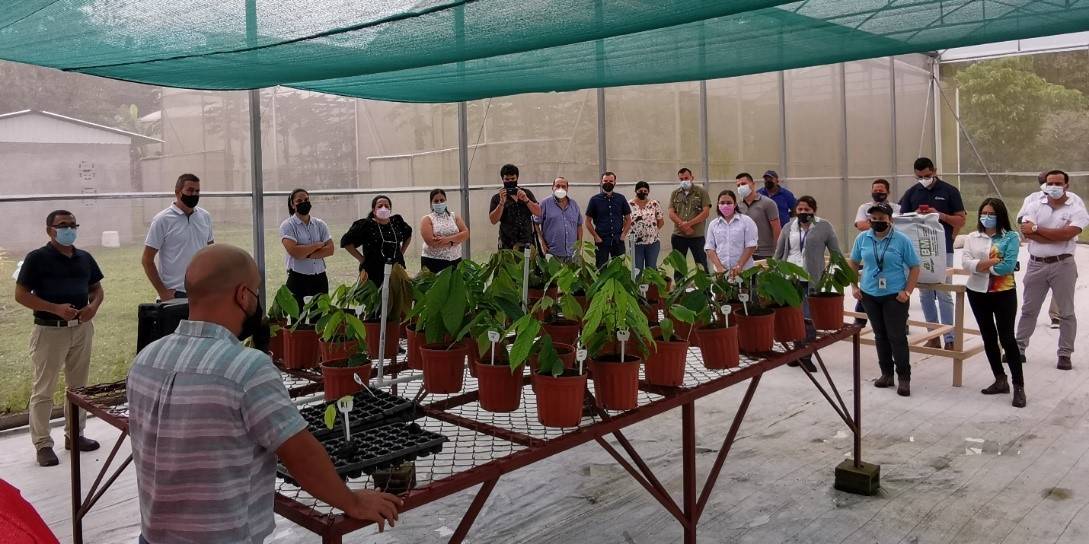In Costa Rica, the advances in the evaluation of the absorption of cadmium by cocoa genotypes and the development of the "Cadmium point layer" were shown.

Within the framework of the Multi-agency Cocoa Platform for Latin America and the Caribbean project “Cacao 2030-2050”, a transfer activity was carried out to show the advances in the evaluation of the absorption of cadmium by cocoa genotypes and the development of the “Capa of cadmium points” in Costa Rica.
Ing. Laura Ramírez, coordinator of the project in Costa Rica, explained the objectives of the activity, in which the advances of two research components were presented: analyze the effect of the varieties on the absorption of cadmium, identify the places where the Cadmium contamination is higher in Costa Rica and advances in the mitigation plot that consists of reducing cadmium in commercial plantations through the application of soil amendments. The activity consisted of the presentation of two conferences and a visit to the greenhouse, under the responsibility of Ing. Luis Fernando Solano and Ing. Kevin Carrillo, who coordinate these two research components of the project in Costa Rica. This activity is the first in a series of informative conferences being developed by the Cocoa Platform 2030-2050, aimed at technicians and producers in the country.
In the following link, you can find the full video of both exhibitions: https://youtu.be/9K93Q34GYZw.
Luis Fernando Solano commented that the productive materials of Costa Rica are being evaluated, where the purpose is to determine the cadmium absorption of these materials. Five cups (R1, R4, R6, ICS-95 and PMCT-58) and two pattern materials (EET-400 and IMC-67) are being evaluated. This trial is being carried out in a greenhouse, where soil from cocoa farms with concentrations of cadmium in almonds of around 2 ppm is used.
With this test, it is sought to determine if there is an influence of the genetics of the material with respect to the absorption of cadmium. With this, better decisions can be made in the choice of materials for the production of cocoa in the country. In the following link you can find an informative video of the trial: https://youtu.be/IwIQSYR_xRc.
Ing. Kevin Carrillo, presented the layer of hot spots (hotspots) of the concentration of cadmium in Costa Rica, made in three cocoa growing areas of the country for a sample of 150 farms. The concentration of cadmium in the almond was related to the properties of the soil and leaf tissue of the plant. A publication is in the process of being prepared, jointly by Costa Rica and Ecuador.
To analyze the reduction of cadmium in almonds, a mitigation plot was established, in which mineral and organic amendments applied to the soil are being evaluated: lime, vermicompost, biochar, zeolite and minor elements (Zn, Mn and Cu), with the objective of determining which amendments manage to reduce the concentration of cadmium in the cocoa almond. To this end, cocoa soil, leaves and almonds are being sampled every six months and the concentration of cadmium is determined. In the following link you can find an informative video of the mitigation plot: https://youtu.be/1Z8jYwqGauE.




